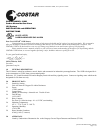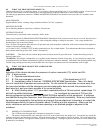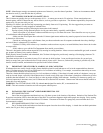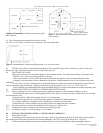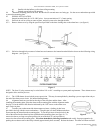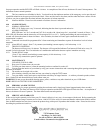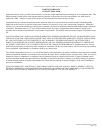
Instruction Manual: COSTAR® 12SIR, 12V System CO Alarm
QGI P/N 099-0066-01 REV 10/26/01
Page 2 of 7
4.0 WHAT YOU SHOULD KNOW ABOUT CO
Carbon monoxide (CO) is an insidious poison. It is a colorless, odorless and tasteless gas. It is a cumulative poison. Even low levels
of CO have been shown to cause brain and other vital organ damage in unborn infants with no effect on the mother.
The following symptoms are related to CARBON MONOXIDE POISONING and should be discussed with ALL members of the
household:
MILD EXPOSURE
Slight headache, nausea, vomiting, fatigue (often described as "flu–like" symptoms)
MEDIUM EXPOSURE
Severe throbbing headache, drowsiness, confusion, fast heart rate
EXTREME EXPOSURE
Unconsciousness, convulsions, cardio respiratory failure, death
Many cases of reported CARBON MONOXIDE POISONING indicate that while victims are aware they are not well, they become so
disoriented they are unable to save themselves by either exiting the building or calling for assistance. Also, young children and
household pets may be the first affected.
Your CO alarm is designed to detect the toxic CO gas that result from incomplete combustion, such as those emitted from appliances,
furnaces, fireplaces and auto exhaust.
A CO Alarm is NOT A SUBSTITUTE for other combustible gas, fire or smoke alarms. This carbon monoxide alarm is designed to
detect carbon monoxide gas from ANY source of combustion.
CAUTION: This alarm will only indicate the presence of carbon monoxide gas at the sensor. Carbon monoxide gas may be
present in other areas.
! WARNING: This product is intended for use in ordinary indoor locations of family living units. It is not designed to comply with
Occupational Safety and Health Administration (OSHA) commercial or industrial standards. Individuals with medical problems may
consider using warning devices that provide audible and visual signals for carbon monoxide concentrations under 30 ppm.
5.0 WHAT YOU SHOULD DO IF THE ALARM SOUNDS
WARNING:
Activation of this device indicates the presence of carbon monoxide (CO), which can KILL
YOU. If alarm sounds:
5.1 1. Operate reset/silence button;
5.2 2. Call your emergency services (________-__________) [fire department or 911];
5.3 3. Immediately move to fresh air – outdoors or by an open door/window. Then, do a head
count to check that all persons are accounted for. Do not reenter the premises nor move away from
the open door/window until the emergency services responders have arrived, the premises have
been aired out, and your alarm remains in its normal condition.
5.4 4. After following steps 1-3, if your alarm reactivates within a 24-hour period, repeat steps 1-3
and call a qualified technician (________-__________) to investigate for sources of CO from fuel
burning equipment and appliances, and inspect for proper operation of this equipment. If problems
are identified during this inspection, have the equipment serviced immediately. Note any combustion
equipment not inspected by the technician and consult the manufacturers' instructions or contact the
manufacturers directly for more information about CO safety and this equipment. Make sure that
motor vehicles are not and have not been operating in an attached garage or adjacent to the
residence.
5.5 IMPORTANT CONSIDERATIONS
The 12SIR has been designed and is warranted to operate for six years.
5.6 The alarm will automatically sense when the level of CO in the air falls below the danger level. You should stay outside the
residence in fresh air until the alarm is silenced. When the alarm sounds, do not stand too close to the alarm. The sound produced by
the alarm is loud because it is designed to awaken a person in an emergency. Prolonged exposure to the alarm at a close distance may
be harmful to your hearing.



